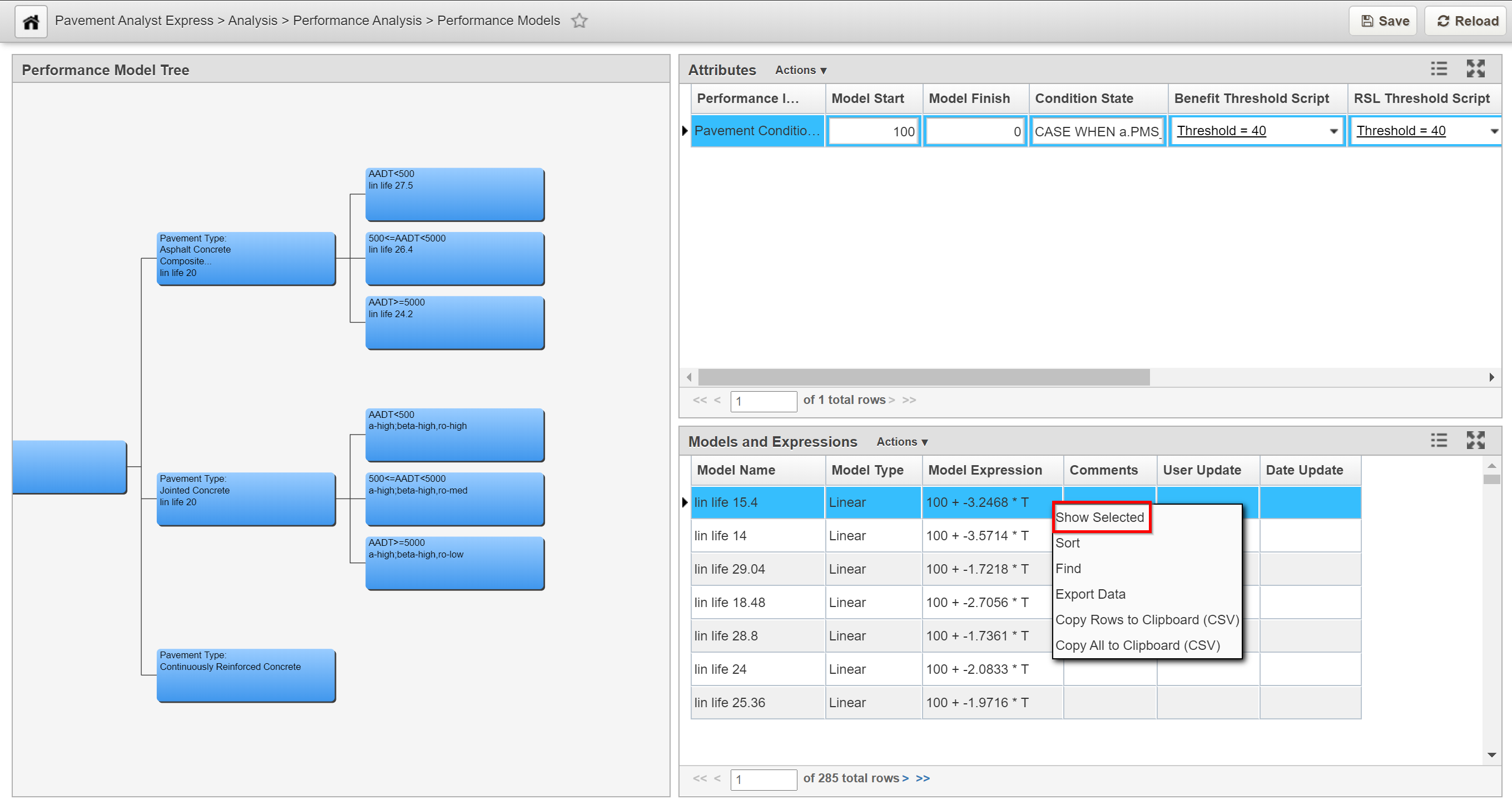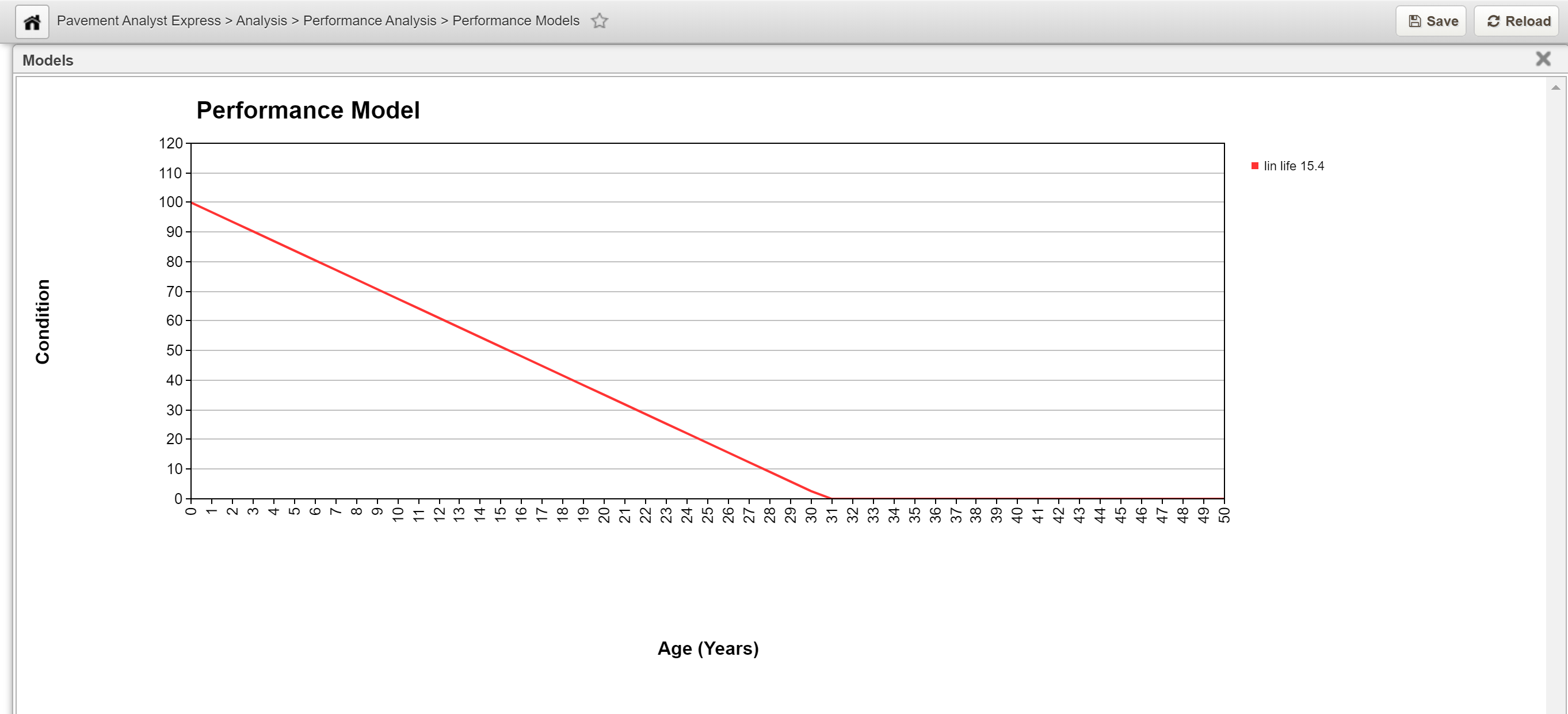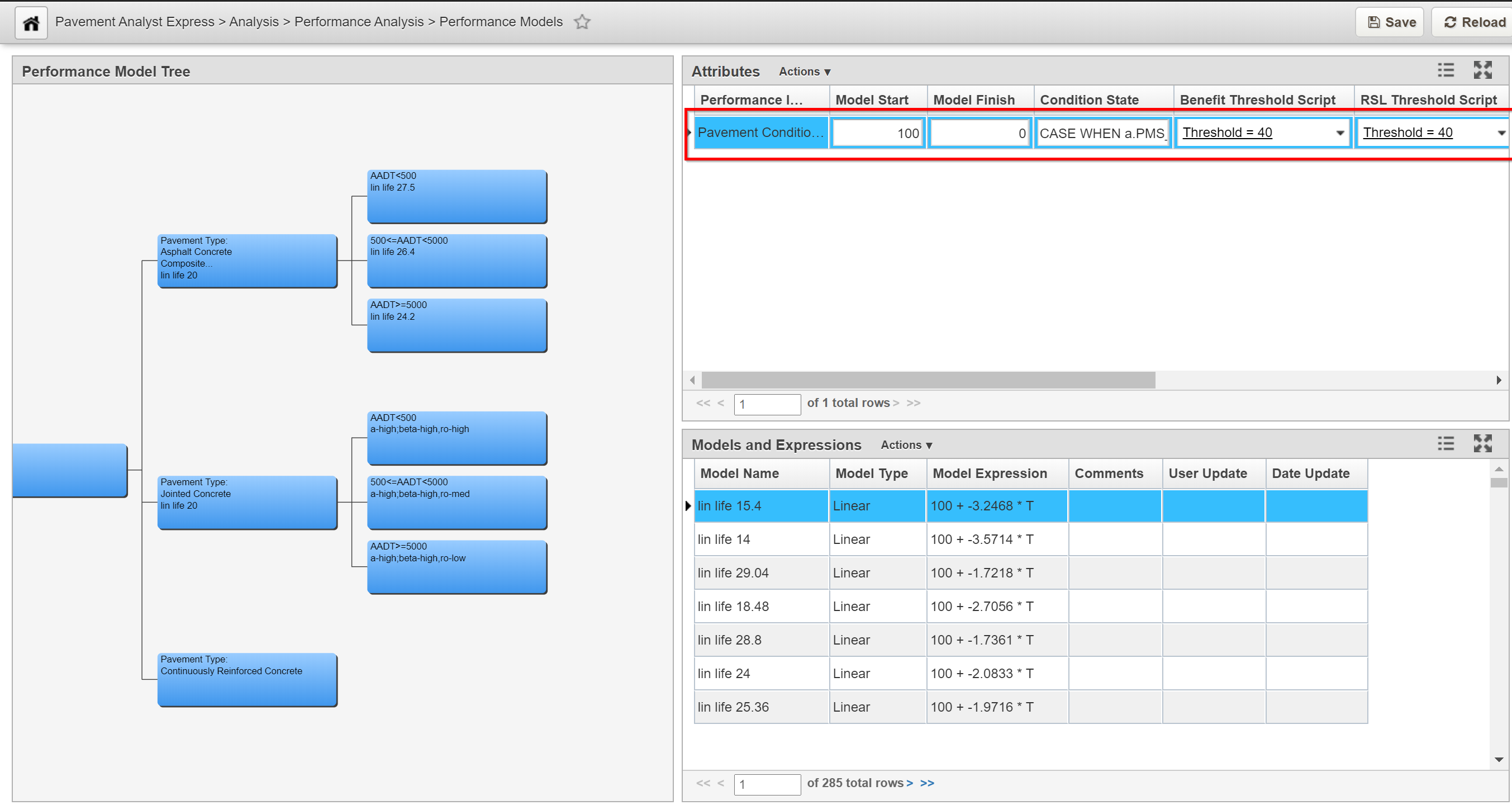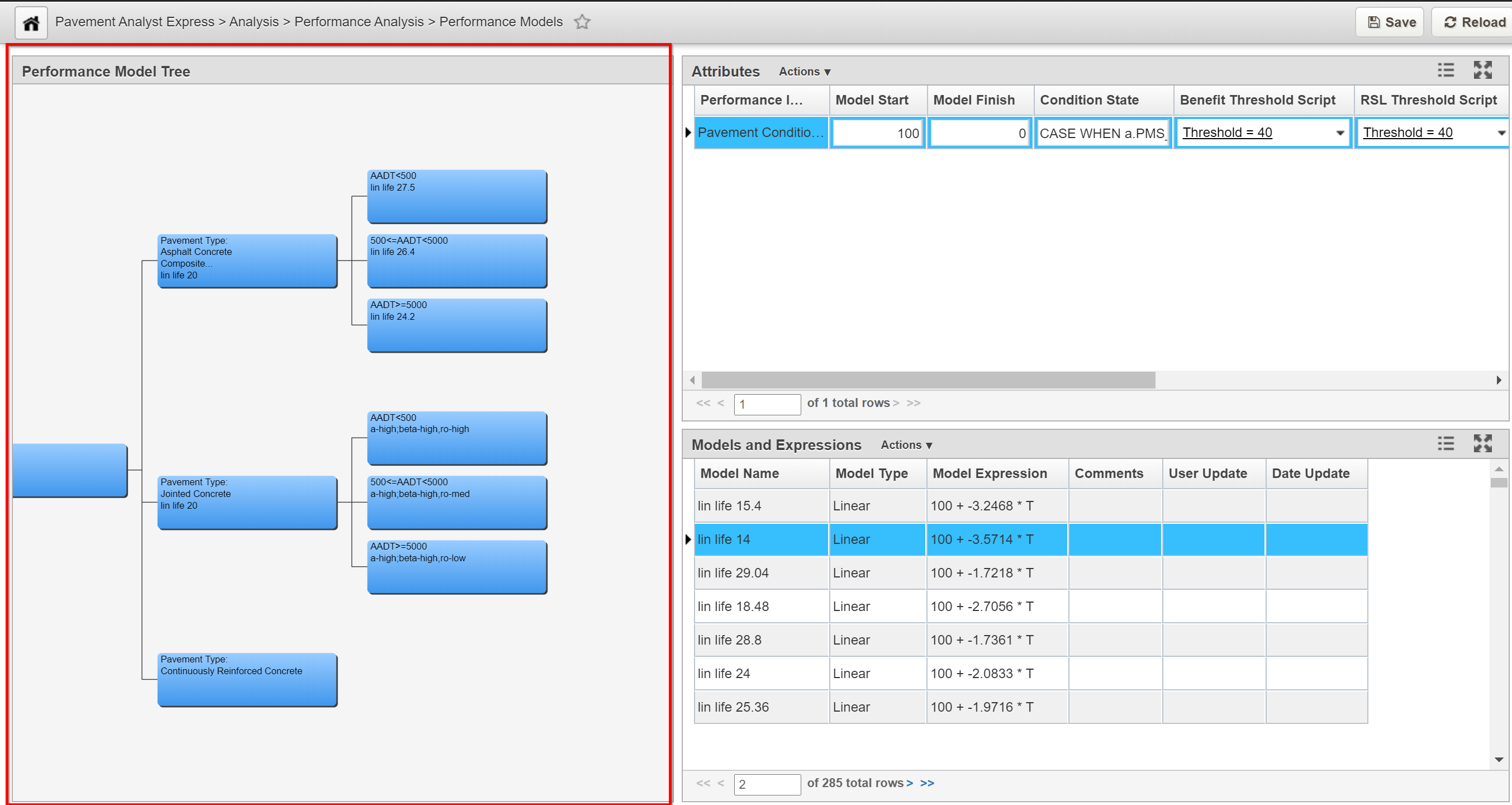Click Here for Training Exercise
The Performance Models window shows the assignment of which model expression is used for which group of performance class for any particular performance index (or condition attribute). The models configured in this window are then used in network analysis. Performance Models window is used to assign a model to a node of the decision tree for each condition attribute. Almost always, models are assigned only to the rightmost nodes. However, when all child nodes for a parent node would use the same model, you can assign a model to the parent node as a shortcut.
Deterioration models can manually be defined in the Models window. You can then view these deterioration models as well as view additional models that are generated through regression analysis by the Analyze Model feature in the Performance Models window.
The Performance Models window has three panes: Performance Model Tree pane, (Condition) Attributes pane, and Models and Expression pane.
For condition attribute selected in the Attributes pane, the Decision Tree pane shows what models are assigned to the different nodes of the Performance Model Class tree (i.e., Default Model Structure). The box representing each node shows the assigned model; unless no model is assigned, in which case the decision variable used in selecting the node is displayed. (If you hover over a node, the system will display the decision variable and value that causes that node to be selected.)
When the Performance Model pane is displayed, the system only show a portion of the decision tree. You can view other parts of the decision tree by holding down the mouse key and then dragging the decision tree as desired. You can also change the magnification by using the wheel on the mouse.
When you right-click a node in the decision tree, the following special commands become available:

If you want to replace an existing model, you can use the Set Selected Model for this Node command directly. The new selection will then replace the node's current model assignment with a different model assignment. |
The parent node must have a model already assigned to it before using this command. (If no model is configured for the parent node, this command is not available.) |
The Models and Expressions pane shows all available performance models. These are created and maintained in the Performance Models List window.
When you right-click a record (or group of records) in this pane, a shortcut menu is displayed with the following special command:


The permitted upper value along the Y axis is always 100. If the function of the curve is to exceed 100, then the system will display the curve as a flat line at 100 until the function of the curve returns to a value less than 100. Similarly, the X axis always displays 50 years: and if the curve reaches 0 before 50 years, the system will display the curve as a flat line along the X axis from the X-intercept to 50 years. |
The Attributes pane shows all available condition attributes configured for your system. (A condition attribute is a measurement index such as rutting or cracking.) They are defined in the Deteriorates column of the PMS Columns in the Analysis window.
What you select in this pane is also displayed in the nodes of the Decision Tree pane.

Only the displayed text changes; the structure and branching criteria are fixed and do not change if the condition attribute changes. |
This pane contains the following columns:
Once the default model structure has been updated, the next step is to assign models to each of the right-most child nodes.
In this example, we assign models to the the right-most child nodes by performing the following steps:

2. In the Models pane, locate the model to be assigned to the first child node and then click the row showing this model to select it.

3. Right-click the first child node and then click Set Selected Model for This Node. The system displays the name of the model in the node.

4. Repeat these steps for the remaining child nodes.
5.Click the Save button to save the changes